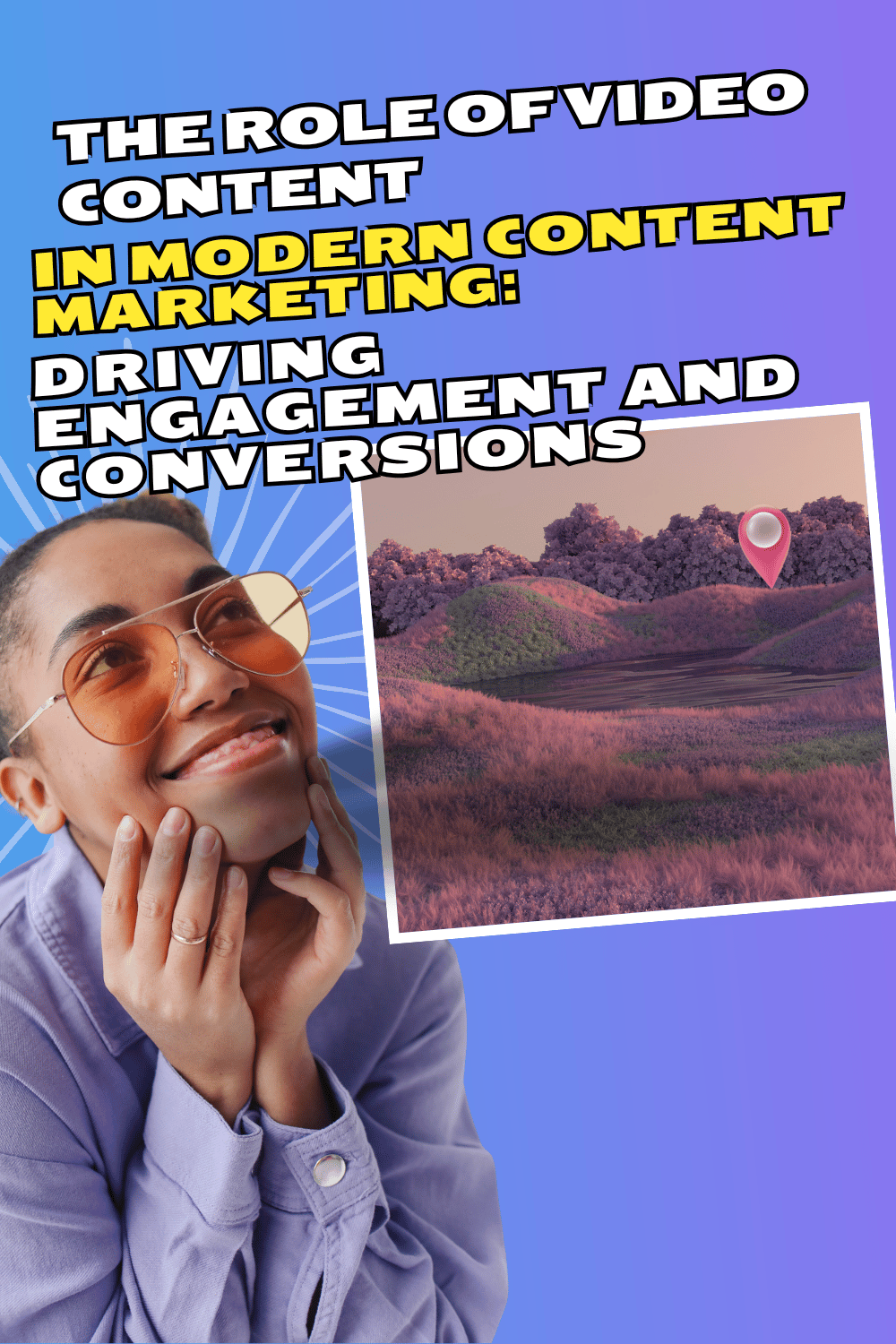Video content has become an essential component of modern content marketing strategies. As a digital marketer, I’ve witnessed firsthand how video has transformed the way brands connect with their audiences. Video content is now used by 91% of businesses as a marketing tool, up from 61% in 2016, demonstrating its growing importance in the field.

In today’s fast-paced digital landscape, video offers a unique ability to engage, inform, and entertain viewers. I’ve found that it can effectively capture attention in ways that text and static images often cannot. Video content allows brands to tell their stories more dynamically, showcase products in action, and create emotional connections with their target audience.
From social media platforms to websites, video has proven to be a powerful medium for driving conversions and building brand awareness. As we explore the role of video in modern content marketing, I’ll share insights on how businesses can leverage this format to enhance their marketing efforts and stay competitive in the digital age.
Evolution of Content Marketing
Content marketing has undergone significant changes in recent years, with video emerging as a dominant force. The shift from text-based content to video-centric strategies has reshaped how brands connect with their audiences.
Transition from Text to Video
I’ve observed a dramatic shift in content marketing preferences. In the early days, text-based articles and blog posts were the primary focus. As technology advanced, visual content gained traction. Infographics and images became popular, enhancing engagement.
The rise of high-speed internet and mobile devices paved the way for video content. By 2020, over 80% of businesses had adopted video as a key marketing tool. This transition wasn’t sudden but evolved gradually.
I’ve seen how video content appeals to shorter attention spans and provides a more immersive experience. It allows for complex ideas to be conveyed quickly and engagingly. This shift has forced marketers to adapt their skills, learning video production and storytelling techniques.
Integration of Video in Digital Strategies
I’ve witnessed the increasing incorporation of video into broader digital marketing strategies. Social media platforms have played a crucial role in this integration. They’ve optimized their algorithms to favor video content, encouraging brands to create more of it.
Video is now a cornerstone of modern marketing strategies. I’ve seen it used across various channels:
- Website landing pages
- Email marketing campaigns
- Social media posts
- Product demonstrations
- Customer testimonials
The versatility of video allows for diverse content types, from short-form clips on TikTok to longer educational content on YouTube. I’ve noticed how brands are experimenting with live streaming, 360-degree videos, and interactive video content to stand out.
Video Content Types and Formats
Video content comes in various formats, each serving a unique purpose in marketing strategies. I’ll explore key types that have proven effective in engaging audiences and driving results.
Explainers and Tutorials
Explainer videos break down complex topics into digestible chunks. I find them particularly useful for introducing new products or services. They typically last 1-3 minutes and use animated graphics or live-action footage.
Tutorials offer step-by-step guidance. I’ve seen success with these in software companies and DIY brands. They can range from quick 30-second tips to in-depth 10-minute walkthroughs.
Both types excel at educating customers and building trust. I recommend using clear visuals, concise scripts, and a friendly tone to maximize engagement.
Product Demonstrations
Product demos showcase features and benefits in action. I’ve found them effective for both physical and digital products.
For physical items, I suggest highlighting unique selling points through close-ups and real-world usage scenarios. With software, screen recordings work well to illustrate functionality.
Demos can be brief teasers or comprehensive walkthroughs. I’ve seen success with both approaches, depending on the product’s complexity and the audience’s needs.
Including comparisons to competitors or before-and-after scenarios can be powerful in demonstrating value.
Customer Testimonials
Testimonials leverage social proof to build credibility. I’ve observed their effectiveness across various industries.
Short, authentic clips from satisfied customers can be more persuasive than scripted marketing messages. I recommend focusing on specific benefits and results rather than general praise.
Video testimonials allow viewers to connect emotionally with real people’s experiences. Including a mix of demographics can help different audience segments relate.
I’ve found success in combining customer stories with product footage for a well-rounded presentation.
Live Streaming
Live video creates real-time engagement opportunities. I’ve seen it used effectively for product launches, Q&A sessions, and behind-the-scenes content.
Platforms like Facebook Live, Instagram Live, and YouTube Live make it easy to broadcast. I suggest promoting streams in advance to maximize viewership.
Interactivity is key in live formats. I recommend encouraging viewers to comment and ask questions. This fosters community and provides valuable insights.
Live streams can be repurposed into shorter clips for other platforms, extending their value beyond the initial broadcast.
Psychology Behind Video Engagement
Video content taps into fundamental aspects of human psychology to capture and maintain viewer attention. The visual nature of video aligns with our innate learning preferences, while storytelling elements forge emotional connections.
Visual Learning Preference
I’ve observed that humans are predominantly visual learners. Video content capitalizes on our limited attention span and keeps us engaged through dynamic visuals. Our brains process visual information 60,000 times faster than text, making video an efficient medium for conveying complex ideas.
Short-form videos, in particular, cater to our shrinking attention spans. I’ve noticed that these bite-sized clips deliver information quickly and effectively, allowing viewers to consume content without feeling overwhelmed.
Visual cues in videos, such as color, movement, and facial expressions, stimulate multiple areas of our brain simultaneously. This multi-sensory engagement enhances information retention and recall, making video content a powerful tool for learning and persuasion.
Emotional Connectivity Through Storytelling
I’ve found that video’s ability to tell stories is crucial in forging emotional connections with viewers. Storytelling activates the limbic system, the part of our brain responsible for emotions and memory formation.
Videos can trigger specific emotions that influence consumer behavior. For example, inspiring videos may motivate viewers to take action, while humorous content can create positive associations with a brand.
The combination of visuals, audio, and narrative in videos creates a immersive experience. This immersion can lead to increased empathy and emotional investment in the content, making viewers more likely to remember and share it.
Measuring Video Content Effectiveness
Video content effectiveness is crucial for successful content marketing strategies. I’ll explore key metrics and audience insights that help evaluate video performance.
Key Performance Indicators (KPIs)
I consider view count a fundamental KPI for video content. It indicates how many times a video has been watched, providing initial insight into its reach.
Engagement metrics are equally important. I track likes, comments, and shares to gauge audience interaction and content resonance.
Watch time is another critical KPI. It reveals how long viewers stay engaged with the video, helping me assess content quality and viewer interest.
Conversion rate is vital for measuring video impact on business goals. I monitor how many viewers take desired actions after watching, such as signing up for newsletters or making purchases.
Audience Analytics
I analyze audience demographics to understand who is watching my videos. This includes age, gender, location, and interests of viewers.
Viewer behavior patterns offer valuable insights. I examine when people watch, on which devices, and how they discover my content.
Retention rate is a key metric I focus on. It shows at which points viewers drop off, helping me identify strengths and weaknesses in my video content.
I also track audience growth over time. This metric indicates if my video strategy is attracting new viewers and building a loyal following.
Challenges and Considerations

Video content marketing presents unique obstacles that require careful navigation. As I explore these challenges, I’ll focus on key areas that impact the effectiveness and reach of video campaigns.
Content Saturation
The digital landscape is flooded with video content, making it increasingly difficult to stand out. I’ve observed that users are bombarded with videos across multiple platforms, leading to potential attention fatigue. To combat this, I must create truly exceptional content that offers genuine value.
Competition for viewer attention is fierce. I need to invest in crafting compelling narratives and visuals that resonate with my target audience. This might involve:
- Leveraging trending topics
- Using humor or emotion
- Incorporating interactive elements
Short-form videos have gained popularity due to shrinking attention spans. I must adapt my storytelling techniques to deliver impactful messages in limited timeframes.
Ensuring Accessibility
Creating inclusive video content is crucial but can be challenging. I need to consider various factors to make my videos accessible to a wider audience:
- Closed captions for the hearing impaired
- Audio descriptions for the visually impaired
- Transcripts for those who prefer reading
Multilingual audiences require localization efforts. This involves not just translation, but cultural adaptation of content. I must factor in the time and resources needed for these processes.
Mobile optimization is essential, as many users consume video content on smartphones. I need to ensure my videos are easily viewable on smaller screens and load quickly on various network speeds.
Balancing Quality and Budget
Producing high-quality video content can be expensive. I face the challenge of creating effective videos within budget constraints. This requires careful planning and resource allocation.
Equipment costs can be significant. I might need to invest in:
- Cameras
- Lighting
- Audio gear
- Editing software
Professional talent, such as actors or voiceover artists, adds to production expenses. I must weigh the benefits of using professionals against the authenticity of featuring real employees or customers.
Post-production can be time-consuming and costly. I need to factor in editing, sound design, and visual effects when budgeting for video projects. Balancing these elements while maintaining quality is an ongoing challenge in video content marketing.








Comments (896)